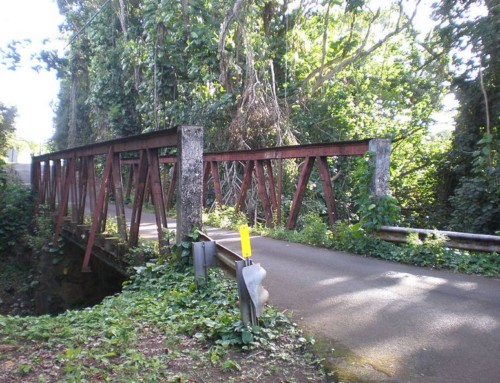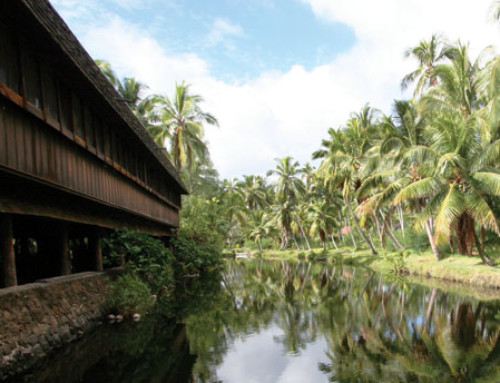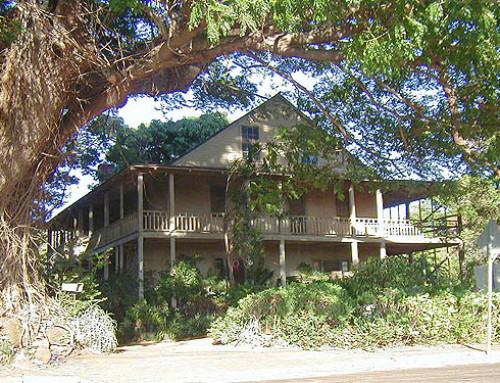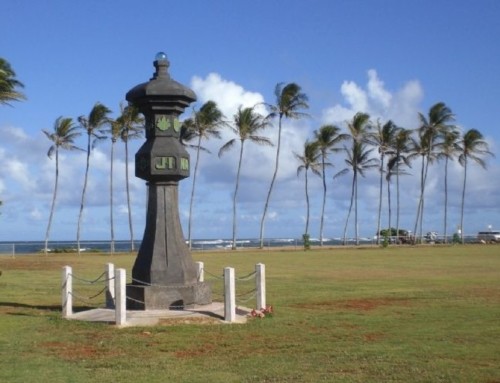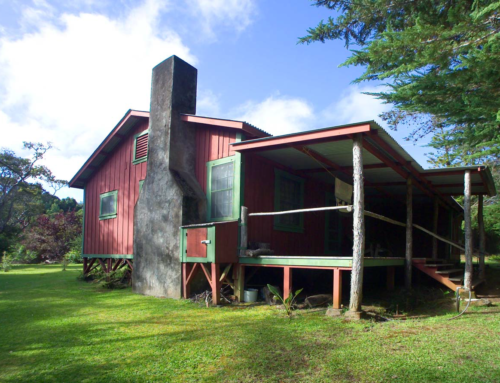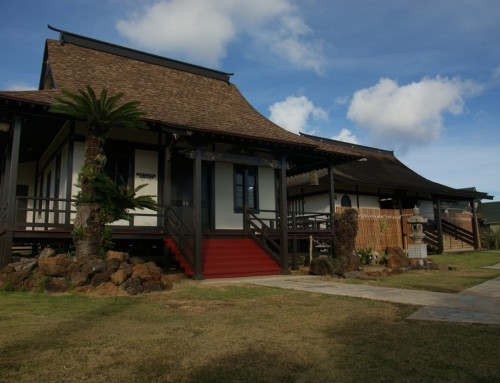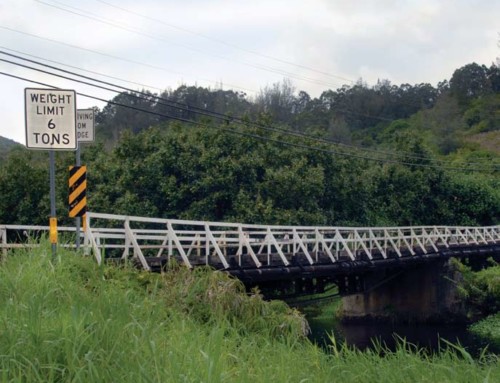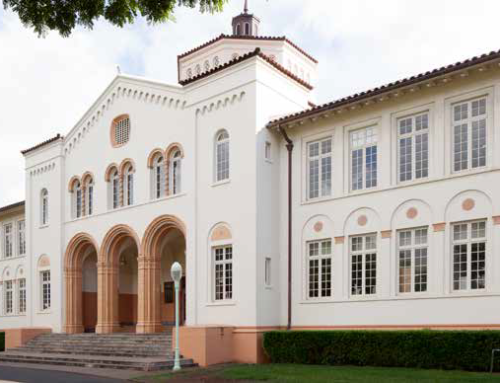UPDATE 2023
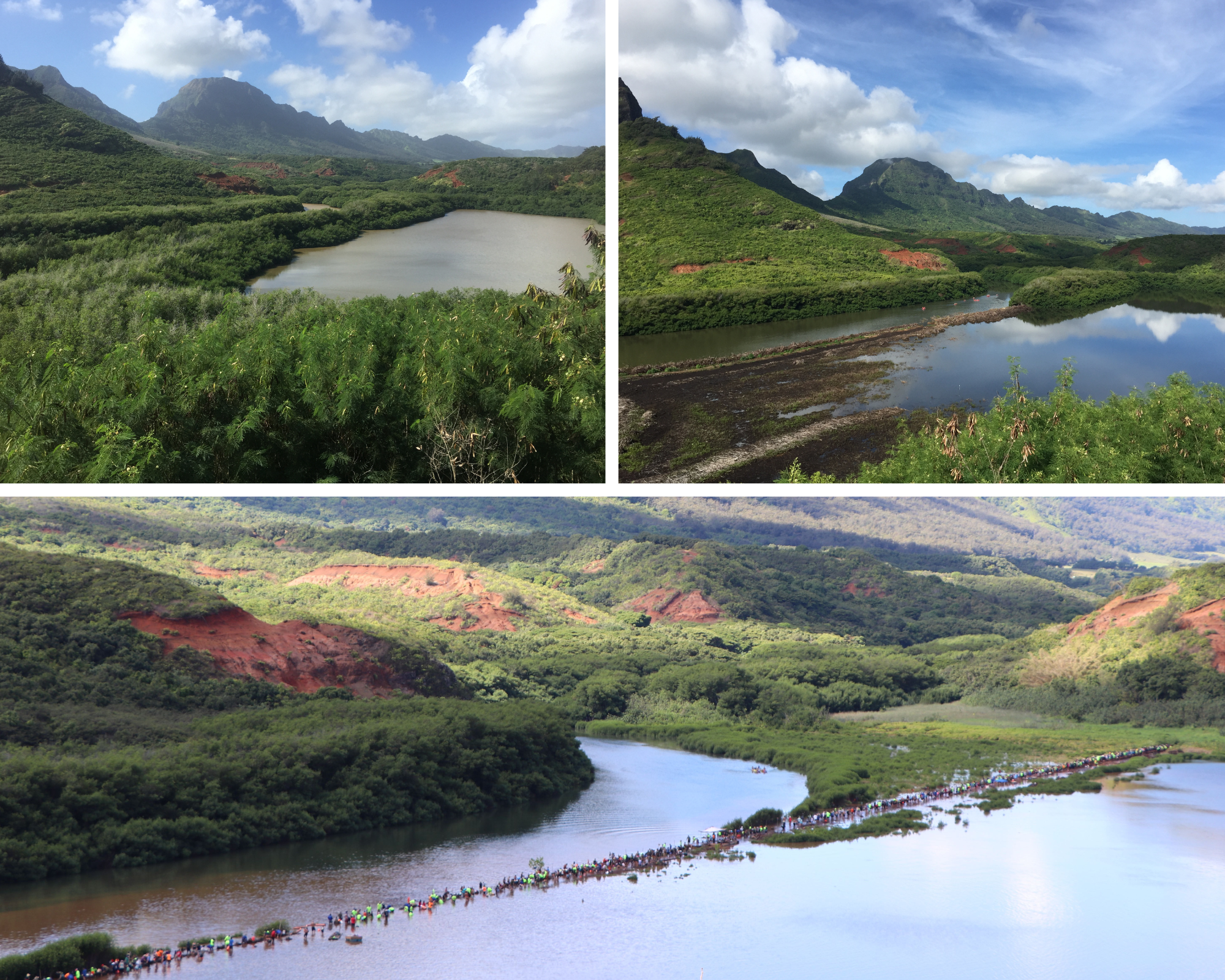
Mālama Hulē’ia’s Community Workday, Restoring the Alakoko Fishpond
In 2009, the Alakoko* Fishpond was placed on Historic Hawai‘i Foundation’s list of Hawai‘i’s Most Endangered Historic Places. For most of the 20th century, Alakoko was neglected, becoming overrun by invasive red mangrove; which damaged the historic fishpond wall, covered open wetlands, and trapped sediment that steadily shrank the fishpond’s expanse of open water.
In June 2022, Historic Hawai‘i Foundation’s Preservation Grant program—made possible by special support from preservation funders—awarded a grant to Mālama Hulē’ia to stabilize and restore the kuapā (fishpond wall) of the Alakoko Loko I‘a.
With help from the grant, Mālama Hulē’i‘a held a 5-year Anniversary community workday on October 21, 2023 to repair the kuapā. Thousands of community members gathered at the Alakoko Fishpond as people of all ages stood formed a line that extended over half-mile, each placing rock after rock on an ancient wall that protects Alakoko Fishpond.
“Alakoko fishpond is a link to the essence of what it means to grow your own food. It’s a link to the culture and the history of the people who cared for this place. So, it really links the past, current, and future ‘āina movement.”
Mālama Hulē‘ia Executive Director Sara Bowen
This community effort to restore a treasured historic site provides an example of the importance and strength of intergenerational and cultural transfer of knowledge. To learn more about the impact of this community workday on the Alakoko Fishpond, please visit Mālama Hulē’i‘a.
Images above, clockwise from top left: Alakoko Fishpond in December 2018, photo taken from the lookout showing it overgrown with mangrove; Alakoko Fishpond in August 2019, photo taken from the lookout showing mid-waypoint of mangrove removal project (approximately 2/3rds of wall cleared). Photos courtesy of Mālama Hulē’i‘a. Aerial Shot of the Alakoko Fishpond Community Workday on October 21, 2023. Photo courtesy of Daniel Dennison from DLNR.
UPDATE 2021
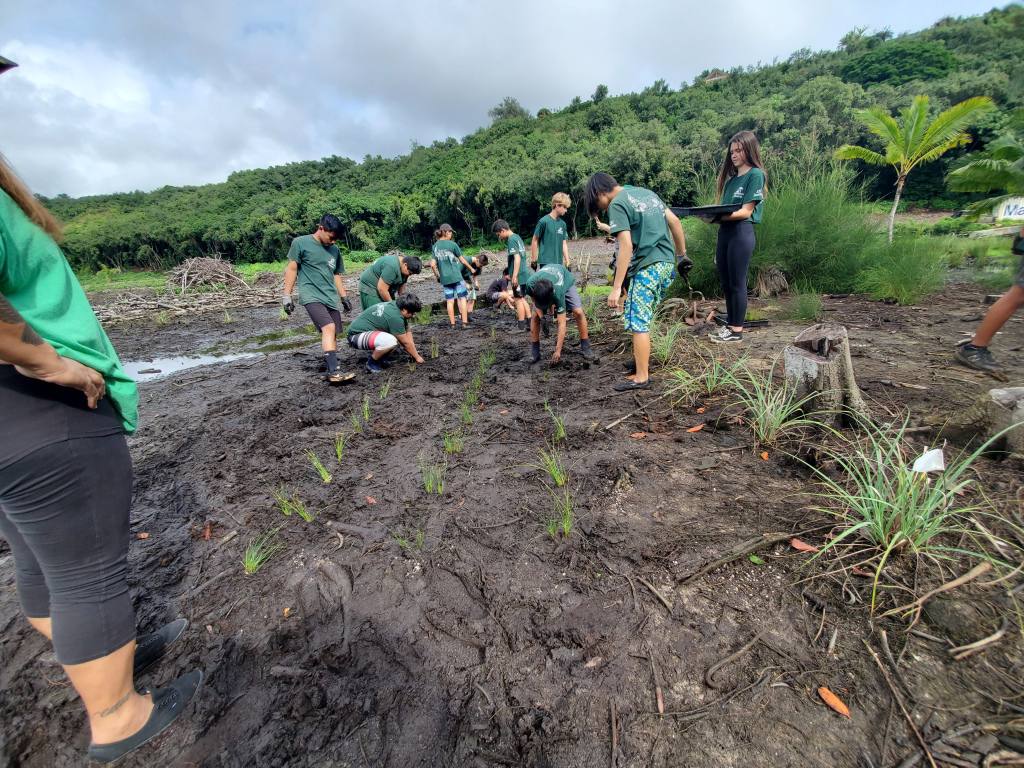
Community Partnership to Preserve Alakoko Fishpond through Purchase and Stewardship
Feb. 5, 2021: Mālama Hulēʻia is collaborating with the Trust for Public Land to purchase the 600-year old Alakoko Fishpond (also known as Alekoko Fishpond and Menehune Fishpond) on Kauaʻi for $3 million. The nonprofit has already been at work for the past few years to restore the pond, remove invasive growth, and engage thousands of volunteers while promoting place-based education. Mālama Hulēʻia was in negotiation with the property owner for a 20-year lease when the owner offered to sell.
Protecting Alakoko will provide impactful community benefits: restoring a healthy watershed, river, and native wetland ecosystem; preserving a beloved cultural site and outdoor classroom for ʻāina-based education; and increasing sustainable aquaculture and food security for Kaua‘i. – Mālama Hulē‘ia
The fishpond was designated on the National Register of Historic Places in 1973. The statement of significance found that the site “is the most significant fishpond on Kaua‘i, both in Hawaiian legends and folklore and in the eyes of Kaua‘i’s people today…Its antiquity makes it the oldest fishpond on Kaua‘i…it is the best example of an inland fishpond in the entire state.” The nomination recommended that the site be preserved as a historical park.
In 2009, the fishpond was listed as one of Hawai‘i’s Most Endangered Historic Places by HHF, in cooperation with the Hawai‘i State Historic Preservation Division of the Department of Land and Natural Resources and Honolulu Magazine. The designation flagged the site as vulnerable to neglect, invasive species and potential development.
Mālama Hulē‘ia efforts to establish a stewardship program to address long-term maintenance and restoration needs is an important step towards its preservation. HHF has written a letter in its support of the hui’s efforts to preserve and protect this special place, including current efforts to purchase the land and protect it from future development.
Update 2009
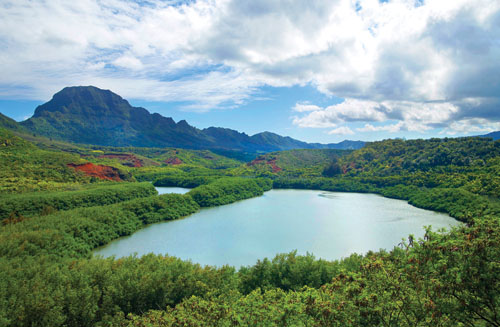
Photo: Courtesy of Kicka Witte
The Alekoko Pond, Nāwiliwili (2009)
Article Written By: Jenny Quill, HONOLULU Magazine
What is it?
Located adjacent to Hulē‘ia National Wildlife Refuge on Kaua‘i, Alekoko* Pond, also known as Menehune Fishpond, is thought to have been built approximately 580 years ago. Legend has it that the Menehune built the fishpond overnight, meticulously assembling the 900-yard lava-rock wall that bisects a bend in Hulē‘ia Stream. The wall, which is about 5 feet high and 2 feet wide in some places, was designed to allow larval fish in while keeping adult fish from escaping, providing food for the local community, and making the pond one of the best remaining examples of ancient Hawaiian aquaculture.
What threatens it?
Alekoko, which was added to the National Register of Historic Places in 1973, has fallen victim to both nature and neglect. Red mangrove trees, an invasive species, have set down branching roots along the wall, pushing rocks into the pond. Sediment from the adjacent stream is also an issue. “Little by little, every winter, with the floods, the Alekoko is filling up with soil and no one is removing it,” says Department of Land and Natural Resources aquatic biologist Donald Heacock, who is also the co-founder of the Nāwiliwili Bay Watershed Council and the owner of the property next door to Alekoko Pond. If Alekoko is not properly maintained, says Heacock, it will disappear in 30 to 40 years as a result of eutrophication, a natural process that occurs when aging lakes or ponds gradually build up concentrations of plant nutrients, which, in increased amounts, speed up plant growth and kill off the pond’s animal life.
What can be done?
The Okada family of Honolulu’s Okada Trucking Co. owns the 102-acre parcel on which Alekoko Pond is located. The family attempted to sell the property for $12 million in 2005, but had no takers. The property is not currently for sale, and the Okadas have not publicly indicated what they intend to do with the estate.
Several community groups, including Heacock’s Nāwiliwili Bay Watershed Council, are interested in preserving Alekoko. “Nāwiliwili [Bay Watershed Council] has drafted a letter to the owner to look into leasing the pond in order to restore it,” he says.
Alekoko is also on Kaua‘i Public Land Trust’s radar. “We hope to begin looking at it seriously next year,” says executive director Jennifer Luck, who would like the trust to acquire the property, but feels, given the current economic climate, a conservation partnership with the Okadas is more likely. “As far as what’s best for the property,” says Luck, “it would be ideal to get outright ownership. But we’ll be reaching out to the landowners to see if they’re willing to sell or entertain the idea of a conservation project. [The Okadas] would receive a lot of tax benefits, and it would make it easier on the community and the Land Trust.”
*Note: Mālama Hulē’i‘a refers to this ancient Hawaiian fishpond by the name Alakoko, the spelling most commonly used in the earliest references from the 1800s. Most people today call it the Menehune Fishpond and many folks use the name ‘Alekoko. However, Hawaiian Land Court records and Hawaiian language newspapers dating to the 1800s, in the earliest references, mainly use the spelling Alakoko. (Reference webpage, Mālama Hulē’i‘a: Journey of a Name.)


